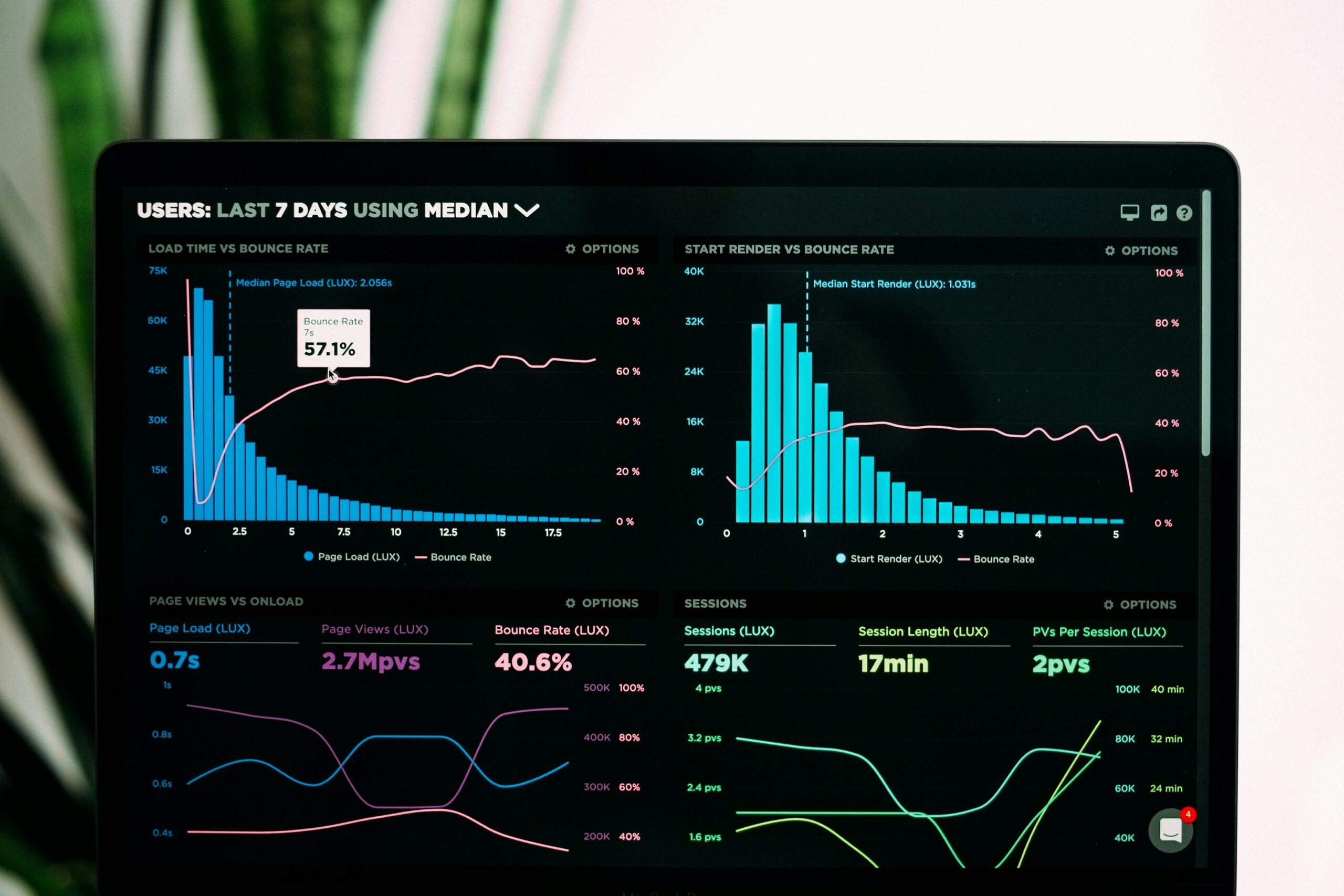Launching a new website is a complex endeavor that demands thorough planning, precise execution, and ongoing refinement. Whether you’re an established brand or a startup, juggling content creation, design, coding, testing, and post-launch updates can quickly become overwhelming. That’s why understanding the full website design timeline—from initial planning to long-term maintenance—is essential for staying on schedule and within budget.
In today’s fast-paced digital environment, businesses rely on a mix of tools like website builders, mobile platforms, and content management systems (CMS) to simplify development workflows. Yet, the technical backbone—spanning HTML, CSS, JavaScript, and server infrastructure—plays an equally important role in shaping the final product.
This article outlines each critical phase of a website launch, complete with defined milestones and strategic objectives. From collecting requirements and implementing SEO best practices to backend integration and post-launch monitoring, each stage is examined in depth.
Pre-Launch Preparation and Planning Stages

This initial phase lays the foundation for a successful website launch by establishing the fundamental requirements and objectives. During pre-launch preparation and planning, teams engage in extensive research and strategic discussions. This stage ensures that every critical element—from domain name selection and content strategy to budget allocation and project timelines—is meticulously addressed. A well-organized planning phase often incorporates tools such as checklists, project management software, and digital calendars to structure the workflow. It also involves identifying potential challenges like scope creep and miscommunication among stakeholders, which are common in website development projects. Detailed risk management, contract reviews, and usability assessments are vital to ensure that the effort does not get derailed later.
Gathering and Organizing Project Requirements
In this sub-phase, project requirements are collected from all stakeholders, including marketing teams, designers, developers, and clients. Establishing clear project requirements involves gathering detailed information about the website’s purpose, target audience, required functionalities, design preferences, and technical specifications. This process helps avoid ambiguity and ensures that every team member understands their roles and responsibilities. Moreover, documenting requirements through formats like requirement traceability matrices helps track changes over time. Typical requirements include content elements such as website copy, media assets, JavaScript integrations, and server capacity details. Having a documented list of requirements minimizes miscommunication and sets realistic expectations. This systematic approach, supported by industry best practices, improves project clarity and streamlines decision-making across all teams involved.
Outlining Functional and Technical Specifications
This section focuses on creating a detailed blueprint of the website’s functionality and technological stack. Functional specifications often include user interface designs, navigation flow, and interactive elements such as calls to action and feedback forms. Technical specifications address the underlying infrastructure—database schemes, API integrations, hosting solutions, and security measures. For instance, specifying that the website must be accessible on mobile devices and responsive across platforms is crucial. Information architecture and the integration of various programming languages like HTML, CSS, and JavaScript are central to this stage. A successful specification document acts as a living blueprint for developers and designers, ensuring seamless workflow across all project stages. It forms the backbone of the website design timeline by mapping out every technical detail needed to achieve project goals.
Setting Realistic Milestones and Deadlines
Establishing clear milestones and deadlines is critical to tracking progress for the project. In this sub-phase, project managers collaborate with all team members to define checkpoints, set achievable content delivery goals, design finalization, coding phases, and testing sessions. These milestones should consider factors such as website build complexity, potential delays in content creation, and unforeseen technical challenges. Allocating buffers in the schedule helps accommodate last-minute changes without significantly delaying the launch date. Setting realistic deadlines ensures that feedback loops and communication channels remain open, enabling iterative refinement. With milestones defined, teams can use project management tools to monitor progress, address delays promptly, and adhere to a structured workflow that supports overall project success.
Content and Strategy Phase Timeline

The content and strategy phase is where the website’s voice takes shape. This phase involves rigorous content planning, creation, and organization to ensure that the website resonates with its target audience while incorporating essential SEO keywords and marketing strategies. Effective content strategies align with broader business goals, such as boosting online visibility and maximizing user engagement. In this stage, content must be detailed, transparent, and optimized for search engines. Ensuring keyword-rich content relating to terms like website builder, content management system, and website launch checklist improves search engine indexing and overall website performance. A well-planned content strategy supports conversion and addresses factors like readability and user interface design, making the experience more engaging for visitors.
Creating and Organizing Website Copy
Developing compelling and organized website copy is at the heart of the content strategy phase. This involves researching target demographics, understanding consumer behavior, and integrating critical SEO keywords naturally throughout the content. Website copy should clearly articulate the business’s value proposition, explain its services, and guide users through their journey with strong calls to action. Each page, whether it’s the home page, about us, or service descriptions, should relay information in a manner that is easily digestible. The process typically involves multiple drafts and feedback sessions to fine-tune the message and ensure consistency. Utilizing content creation tools and maintaining an editorial calendar are effective methods to keep content development on track. Moreover, successful website copy not only ranks well but also converts visitors into leads, showcasing the website’s commitment to value and quality assurance.
Establishing SEO and Keyword Priorities
This sub-phase focuses on researching and prioritizing SEO keywords that are critical to driving traffic and improving search engine ranking. Businesses must balance technical SEO, including URL optimization and JavaScript considerations, with on-page elements like metadata and keyword-rich content. Teams identify high-impact keywords through tools such as Google Analytics and keyword research platforms. By integrating feedback from analytics data and industry studies, project teams can craft a strategic SEO plan that supports both content visibility and performance metrics, such as bounce rate reduction. Prioritizing these keywords helps ensure that the website ranks for queries that are relevant to its products and services, ultimately driving higher lead generation and improving overall online presence.
Developing Media Assets and Visuals
Visual content plays a pivotal role in supporting the website’s narrative and enhancing user experience. This sub-phase involves creating or sourcing high-quality images, graphics, videos, and infographics that reflect the brand’s identity and complement the written content. Developing media assets includes considering website aesthetics such as color schemes, font choices, and layout designs that align with the established visual style and branding elements. Media assets also need to be optimized for performance, ensuring fast loading times and responsive layouts across devices. Companies often use tools like Adobe Creative Suite or online design platforms to develop compelling visuals that boost user engagement. Research has indicated that websites with high-quality visuals experience a significantly lower bounce rate and increased time-on-site. In addition, these visuals should be integrated seamlessly with the content to create a cohesive and inviting browsing experience.
Design and User Experience Phase Timeline

Design and user experience (UX) are paramount to the success of a website, as they determine how users interact with the site and perceive the brand. A well-designed website not only attracts visitors but also enhances user engagement and conversion rates. This phase focuses on creating an intuitive interface, effective navigation structures, and visually appealing layouts that improve usability. Design efforts must account for responsive design that adapts to various mobile devices and desktop environments. Moreover, the design should harmoniously blend the functional aspects with aesthetic elements to provide a seamless and enjoyable experience. A primary goal in this phase is to ensure that no matter the user’s device or browser, their interaction with the site remains fluid and engaging. Comprehensive usability testing and iterative wireframe development are crucial components during this period.
Initiating Wireframe and Layout Development
The wireframe development phase is where concept meets execution in the design process. In this phase, designers create basic frameworks or blueprints that outline the placement of elements such as navigation menus, content sections, and call-to-action buttons. A wireframe is essentially a low-fidelity visual guide that lays the groundwork for the subsequent high-fidelity designs. It allows team members to visualize the overall structure and placements without the distraction of detailed graphics or color schemes. The process often involves using collaborative tools like Sketch or Adobe XD to produce interactive wireframes that can be adjusted based on stakeholder feedback. This initial design schematic is crucial for identifying potential usability issues and ensuring that the layout supports both SEO and content goals. Detailed discussions about user flow, responsive adjustments, and accessibility features support this phase and ensure alignment with the overall project timeline and objectives.
Finalizing Visual Style and Branding Elements
Once the basic wireframes are approved, the focus shifts to finalizing the visual style and branding elements of the website. This sub-phase involves selecting the appropriate color palette, typography, imagery, and iconography that reflect the brand’s identity. The chosen visual style should resonate with the target audience and foster trust, thereby enhancing the user experience. Designers work closely with marketing and brand teams to ensure a cohesive presentation that communicates the desired tone and message. High-fidelity mockups, often created using tools such as Figma or Photoshop, are refined through multiple iterations and stakeholder feedback. This process also involves testing different visual variants to determine which design drives the best conversion rates and user interactions. Ultimately, a successful visual design is one that not only looks attractive but also reinforces the brand’s core message and enhances overall site usability.
Adapting for Multiple Device Formats
With the proliferation of mobile devices, ensuring that the website design adapts seamlessly to various screen sizes is essential. This sub-phase involves tailoring the user interface to perform optimally on smartphones, tablets, laptops, and desktops. Designers use responsive design techniques and frameworks like Bootstrap to create layouts that automatically adjust to different device resolutions. This approach improves accessibility for all users and contributes to more positive user interactions. Detailed testing across multiple devices ensures that interactive elements such as buttons, images, and navigation menus are easily accessible and aesthetically pleasing regardless of screen size. Designers also consider touch screen optimization and readability issues, ensuring that font sizes, white space, and image scaling remain consistent. This careful attention to responsive design not only enhances usability but also positively influences search engine ranking, as mobile-friendliness is a key ranking factor. By continuously iterating on visual and functional aspects, teams create an adaptive design that maximizes user satisfaction and engagement across all platforms.
Development and Programming Stages Timeline

The development and programming stage transforms design prototypes into functional code. This phase encompasses both front-end and back-end development tasks that enable a smooth, responsive, and secure website. It involves implementing intricate coding frameworks, integrating databases, and establishing essential server-side functionalities. Developers work on converting design layouts and branding elements into interactive, accessible web pages. Critical programming components such as HTML, CSS, JavaScript, and various backend programming languages are utilized to meet the project specifications set during the planning stages. This phase is heavily reliant on effective communication, workflow management, and rigorous testing to ensure that technical functionalities like form submissions, API integrations, and real-time data display operate flawlessly. The overall success of the website largely depends on this stage because it establishes the technical foundation that supports all user interactions. In addition, adherence to coding standards and performance optimization techniques is crucial for enhancing user experience and search engine indexing outcomes.
Implementing Front-End Code and Responsiveness
In front-end development, website design elements are coded into interactive webpages using HTML, CSS, and JavaScript. Developers ensure that all visual elements represent the finalized design accurately and function smoothly across various browsers and devices. The process involves creating responsive layouts using frameworks such as Bootstrap or Foundation to guarantee compatibility on both desktop and mobile devices. Developers can significantly reduce bounce rates and improve overall site speed by focusing on clean code and optimized loading times. Additionally, front-end code implementation incorporates user interface enhancements like animations, hover effects, and dynamic content updates, which positively contribute to user experience. A continuous testing process is vital, employing tools like Google Lighthouse and BrowserStack to check performance on multiple platforms. This detailed approach ensures that the website remains visually appealing and technically robust, providing an optimum experience regardless of device or screen size.
Integrating Back-End Functionality and Database Schemes
Back-end development is critical for managing server operations, database interactions, and overall website performance. This sub-phase involves writing server-side code using languages such as PHP, Python, or Node.js to handle user requests, process data, and manage sessions. Developers design and implement efficient database schemes using MySQL, PostgreSQL, or other relational databases to ensure that data is stored securely, retrieved quickly, and scaled seamlessly. Integrations like e-commerce functionalities, content management systems, or custom APIs are also developed at this stage. Maintaining robust security measures, including encryption and regular backups, is essential to protect user data and maintain trust. Detailed documentation of database structures and server configurations is maintained to ensure smooth handovers during the development process. Close collaboration between front-end and back-end teams ensures that the user interface remains synchronized with server responses, resulting in a cohesive and functional website that supports both performance and security.
Setting Up Content Management Systems
Deploying a content management system (CMS) is essential for streamlining website content creation and updates. This sub-phase involves choosing a suitable CMS platform—such as WordPress, Drupal, or Joomla—and configuring it to meet the project’s requirements. The CMS provides a user-friendly interface that allows non-technical users to update site content, add pages, and manage media without requiring direct coding skills. Integration with other website elements, such as SEO plugins, social sharing tools, and analytics dashboards, further enhances functionality. Developers customize themes and plugins to ensure that the CMS aligns with the previously approved design and technical specifications. Effective CMS setup supports scalability and facilitates the inclusion of ongoing content strategies, allowing businesses to adapt quickly to changing market needs while ensuring a consistent brand image across the site.
Testing, Review, and Launch Stages Timeline

The testing, review, and launch stages are essential to ensuring that the website is polished, fully functional, and ready for live deployment. Rigorous testing protocols help identify and resolve potential technical issues, usability challenges, and security vulnerabilities. This phase involves both automated testing—using tools to check code quality, responsiveness, and performance—and manual user testing to capture real-world feedback. Detailed testing improves the overall quality assurance process and ensures that the website meets all established requirements and technical specifications. The review process is iterative by nature, requiring close collaboration among developers, designers, and stakeholders to incorporate feedback efficiently. Once all issues are resolved, the website is prepared for a secure launch, which includes final pre-launch checklists, backups, and server optimizations to handle high traffic.
Running User Interface and Performance Evaluations
In this sub-phase, both user interface (UI) and site performance evaluations are conducted thoroughly. Performance evaluations focus on metrics such as page load times, server response speeds, and efficient javascript execution, which are all critical components influencing the bounce rate and overall user experience. User interface evaluations involve usability testing sessions where real users interact with the website. Feedback is gathered through surveys, session recordings, and direct observations which help identify pain points in navigation, responsiveness, and overall design satisfaction. Comprehensive testing tools like Google Analytics and heat mapping software are employed to gather quantitative data on user behavior. The objective is to ensure that the website not only meets technical benchmarks but is also user-friendly and engaging to the target audience.
Refining Elements Based on Feedback
After initial testing, websites typically require a phase of refinement based on user and stakeholder feedback. This stage involves iteratively improving design, functionality, and content based on the data collected during testing evaluations. Developers and designers work together to fix identified bugs, adjust layouts, and optimize multimedia elements such as images and videos to ensure faster load times. Refined adjustments target critical performance metrics, user engagement, and overall usability by incorporating recommendations from focus groups and beta testers. The refinement process continues until the website meets the desired quality standards, ensuring that it reflects best practices in responsive design, SEO, and user experience design. Stakeholders review the improvements and give final sign-offs, ensuring alignment with the initial project objectives and timelines.
Transitioning to a Live Environment Securely
The final sub-phase of this stage is transitioning the website from a testing environment to a live, production-ready environment. This process requires detailed preparation such as backing up existing data, configuring hosting environments, and ensuring that necessary security measures—like SSL certificates and firewalls—are in place. During the launch, developers monitor the deployment to ensure that there is no downtime and that any unforeseen issues are quickly addressed using rollback strategies. Effective coordination among teams ensures that the transition is smooth, minimizing disruptions for users. Rigorous launch checklists, along with real-time monitoring through performance analytics and user feedback channels, guarantee that the website functions as intended from day one of going live.
Post-Launch Monitoring and Adjustments Timeline

Once the website is live, continuous monitoring and subsequent adjustments are crucial for maintaining optimal performance and user satisfaction. Post-launch activities involve tracking key performance indicators (KPIs) such as user engagement, loading times, conversion rates, and overall site usability. These metrics are monitored via analytics tools, providing insights that guide future improvements. Having a structured post-launch monitoring plan ensures that any issues are detected early and rectified promptly, thus fostering a stable and reliable online presence for the business. Continuous maintenance not only safeguards the website against technical glitches and security breaches but also supports the strategic goals outlined during the planning stages. As digital trends and user expectations evolve, businesses must remain agile and adapt their websites accordingly.
Scheduling Ongoing Maintenance and Updates
Ongoing maintenance is essential to keep the website functioning optimally and securely following its launch. Scheduled maintenance may include regular software updates, security patches, database optimizations, and content updates. Proactive maintenance prevents common issues such as outdated plugins, which could lead to vulnerabilities, and ensures that the site aligns with the latest SEO practices. Many companies schedule monthly technical audits, which include load testing, broken link checks, and visual assessments to confirm that all features are operating as intended. These routine checks help maintain a high level of performance and user satisfaction while also communicating a commitment to quality that can positively influence brand reputation.
Tracking User Engagement and Performance Metrics
User engagement and performance tracking play a critical role in post-launch strategies. By using advanced analytics platforms like Google Analytics, Hotjar, and SEMrush, businesses can monitor various parameters such as visitor behavior, session duration, bounce rate, and geographic data. These metrics provide actionable insights that help identify both strengths and areas needing improvement. For example, if certain pages exhibit a high bounce rate, further analysis may reveal that the content lacks clarity or that the page load speed is suboptimal. Tracking these metrics on a continuous basis ensures that any performance drops are quickly addressed. This data-driven approach helps streamline content updates, refine marketing strategies, and ultimately drive higher user retention and conversion rates.
Planning for Future Improvements Based on Data
The final sub-phase focuses on leveraging data insights to plan and implement future improvements. This strategic approach includes reviewing performance reports, user feedback, and changing digital trends to identify new opportunities for enhancement. Future improvements may encompass increasing website speed, adding new functionalities, updating design elements for better responsiveness, or expanding content based on emerging keyword trends. Planning for future enhancements is critical for keeping the website competitive and aligned with evolving user expectations. By creating a prioritized roadmap for post-launch improvements based on concrete data, businesses can ensure that their online presence continues to grow in user engagement, retention, and overall performance. Regular strategic reviews, integrated with stakeholder inputs, ensure that the website remains resilient and adaptive in a dynamic digital ecosystem.
Frequently Asked Questions
Q: How long does the entire website launch process typically take? A: On average, launching a new website can take anywhere from 3 to 6 months, depending on the complexity of the design, development, and testing phases. Larger projects or those with extensive custom functionalities might require more time.
Q: Why is pre-launch planning so important in the website development process? A: Pre-launch planning establishes clear project requirements, sets realistic milestones, and aligns team expectations. This comprehensive strategy reduces the risk of scope creep and ensures that deadlines are met, ultimately resulting in a smoother launch and higher overall project success.
Q: How often should a business update its website post-launch? A: It is advisable to schedule regular maintenance and content updates on a monthly basis. More significant redesigns or upgrades may be planned annually based on user feedback and performance data.
Q: What are the most critical performance metrics to track after launching a website? A: Key performance metrics include user engagement, bounce rates, page load times, conversion rates, and overall traffic. Monitoring these metrics helps identify areas for improvement and ensures that the site continues to meet user expectations.
Q: Can changes made post-launch affect SEO? A: Yes, ongoing updates and improvements can significantly affect SEO. Regularly updating content, optimizing page speed, and improving user experience all contribute to better search engine rankings and increased organic traffic.
Final Thoughts
A successful website launch hinges on thorough planning, precise execution, and continuous improvement. Each phase—from initial preparation to post-launch monitoring—plays a crucial role in delivering a website that meets business goals and offers an excellent user experience. Businesses can achieve lasting digital success by adhering to a structured timeline and refining based on feedback. This article provides a comprehensive framework companies can use to manage their website development projects more efficiently and effectively.
